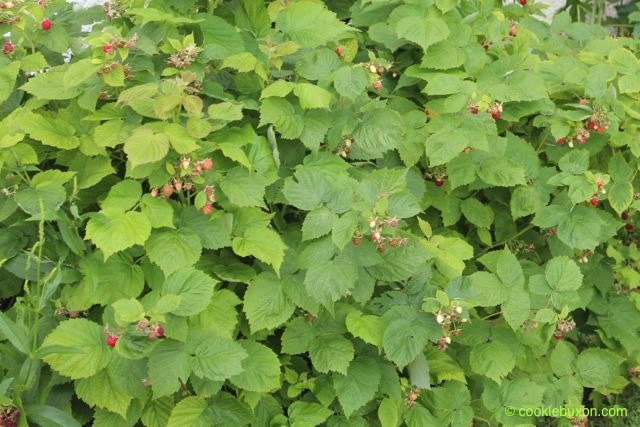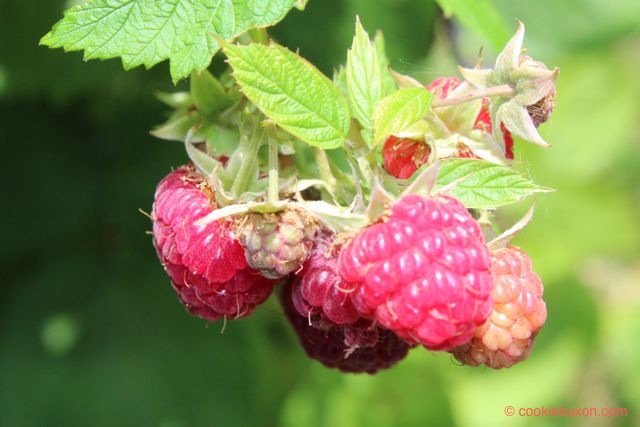Sweet Wild Raspberrries
Rubus idaeus (probably).
Wild Raspberries.
Some years ago, bird droppings apparently contained some raspberry seeds and, through a random process of site selection, these were deposited into our yard alongside our garage into an existing garden bed. When I saw the canes growing in the soil in spring, I left these new visitors in place and over a period of a few years, gradually let them take over about a quarter of the wall running along the back garage. This offered ample space for the canes to spread out and produce their berries.
We have been enjoying the fruits of this accidental seed deposit ever since.
I am not able to verify with certainty what type of raspberry we grow but, judging from appearances, I would suppose that these are the usual wild North American raspberries found in the prairie meadows and along edges of mixed and boreal forests in central Canada.
After the growth of the small flowers on the canes in June, the berries gradually begin to develop, maturing into the sweet wild raspberries that we love so much. The berries develop at varying rates, which means that every day there are new ripe berries ready for picking.
We do not harvest the berries in any organized way. Whenever people are walking about in the back of the yard, they typically meander over to the three or four groupings of tall canes, search under the leaves for the dangling ripe berries, and pluck these off of the bushes, eating the delicious wild berries from the palms of their hands. There is no need to wash the berries. A person has only to check for any obvious creatures like spiders or small little flying bugs, and then enjoy the small fruits freshly picked from the garden. This is enjoying the “You Pick” style of fruit harvest in its simplest form.
If growing a new patch of raspberries, note that the roots of the raspberry do need to be cut back from time to time, as the shoots are robust and can pop up quite a distance from the main plant. This is either a positive or negative situation, depending on how much space you want to commit to a raspberry patch, and how eager you are to control the spread of the canes. They are happy to take up space, so think this through at the outset.
The plants grow their berries on two-year-old canes and produce ripe berries throughout July and August and sometimes into early September.

To learn about various wild fruits growing in Canada, visit:
www.naturenorth.com
Photos & Text: NK
Photo ID: 1308_38; 1308_39
Photo Location: Home Garden
Copyright: cookiebuxton.com
